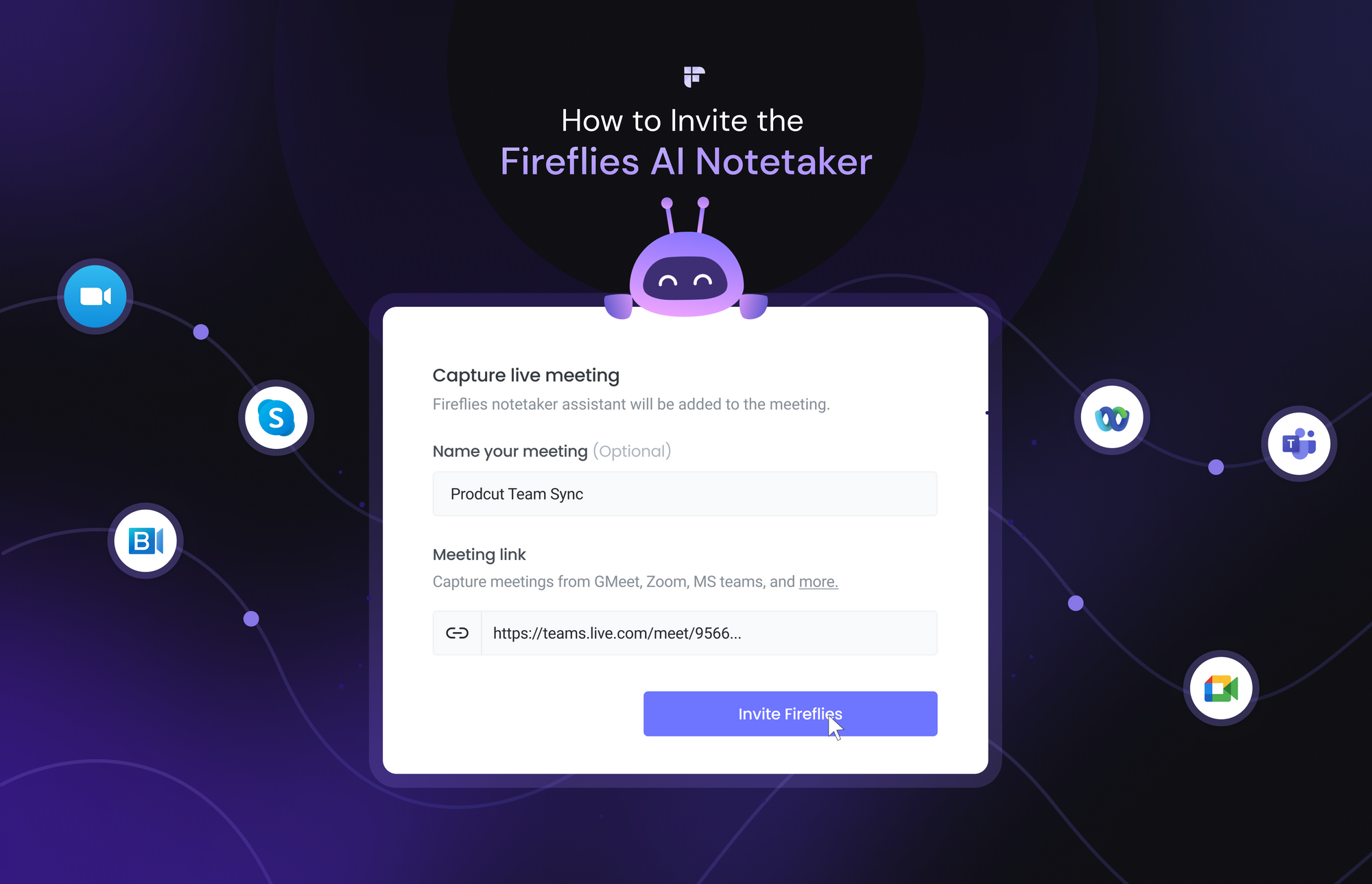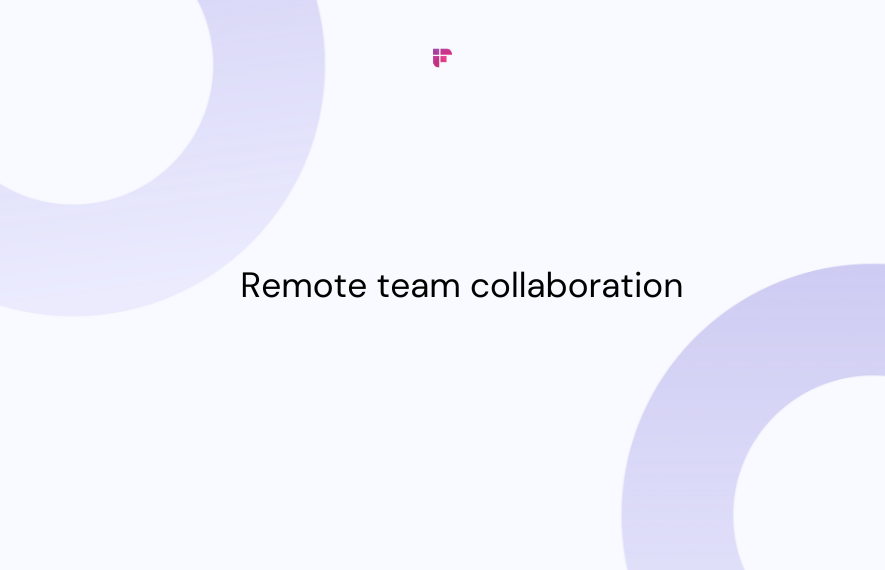The pandemic is sure to alter how we interact with people and conduct our lives. Right from how we travel, work and learn, all has changed. The most significant change of all has been the shift in workspace.
More people are now working out of their homes than in offices. And this physical distance between workers needs to be bridged with more robust communication.
Almost all big and small corporates have opted to work out of home rather than risk the health of their workers. The biggest tech companies--Google, Facebook, Twitter, Shopify, and Square; all say, remote working is here to stay.
According to a study conducted by FlexJobs and Global Workplace Analytics, over the last five years, remote work has grown by over 44% and over 91% since 2010. This upward graph is a strong indicator that remote work is finding a "home" in the hearts of a multitude of employees with each passing year.
Here are some quick stats to put things into perspective –
- 80% of people said when faced with two job opportunities, they will turn down the one that does not offer flexible working.
- As per Global workplace survey results, 90% of employees believe a flexible arrangement would boost morale.
- 85% affirm that productivity in business has improved as a result of more flexibility.
The only thing pandemic did right for us was give a makeover to our archaic understanding of "remote work." A couple of years ago, working from home was seen as a job for telemarketers or freelancers who were paid peanuts for their efforts.
But with the pandemic forcing all of us to work from our home offices, remote work can now turn into a full-time gig for a lot of office goers. In fact, Facebook's CEO, Mark Zuckerberg, has confirmed that in the next five to ten years, 50% of Facebook employees will work from home!
There are different types of remote jobs available and companies and employees, together, are learning about the many benefits associated with remote working.
Contrary to popular belief, remote working allows employees to be more efficient by letting them control their work environment away from office politics and unnecessary hinders to productivity.

Employees also save money on commuting and sundry unnecessary expenditures or being forced to rent expensive accommodations near their workplace. Employers' biggest saves are overheads, office space costs, and transit subsidies.
The time you previously spent commuting can be used more effectively by getting extra sleep in the morning or squeezing in a solid yoga session for a good fresh start, or energizing for the day by enjoying a delightful cup of tea with a loved one. Whatever be the case, a morning routine of your choice often paves the way for a good day at work.
Want to do your bit for the environment but don't know how to? Don't worry; by working remotely, you reduce your carbon footprint and pollution by taking a load of vehicles off the roads. Since the start of the pandemic, there has been a noticeable reduction in traffic congestion on roads.
You can further increase your productivity exponentially by joining hands with the latest work from home apps.
Possibly the biggest plus for employers is the chance to hire talent from all over the globe. Hiring people from all walks of life allows for a more diverse team with legions of experiences and skills to back you up. Remote work can be hugely beneficial for employers and employees alike, once you learn ways to improve your productivity while working from home .

Why is Communication and Team-Building Important for Remote Teams?
Every coin has two sides, and as much as we would like to believe in the existence of only the good, it is simply not possible. Remote working is, unfortunately, no different. With convenience comes mismanagement, miscommunication, distractions, a feeling of detachment, and a struggle to stay motivated.

Let us have a look at some of the challenges faced by employees working remotely-
1. When to Call It A Day: A Woeful Tale of Mishandled Work-Life Balance
According to a study, State of Remote Work 2020, conducted by Buffer, 18% do not know when to unplug and call it a day. A problem some of us had probably foreseen when we moved our offices to our rooms.
A lot of remote workers often lose a sense of time. Working in the office comes with the regular lunch break, a tap on the shoulder from a co-worker to remind you to take a coffee break, or when it is time to leave.

A click of a cursor and shutting down your laptop meant clocking out for the rest of the day. You came in, did your work, and now it was time for some "me" time, eating warm food in your PJs and catching up on new episodes of The Queen's Gambit. Or socializing with your college friends or calling it an early evening and getting a good night's sleep.
With remote working, your laptop has changed to become a tool for getting assigned projects. This overlap of work life and personal life frequently leaves you feeling drained and overwhelmed.
You can opt for the following solutions to keep yourself from overworking –
-
Set Alarms and Timers For Breaks – The best way to remind yourself to take a break is to set constant reminders.
For example, one reminder can be about drinking water, another about lunch, third about a snack, and a final one signaling the end of a workday. (If you are reading this, this is a sign for you to take a break and have some water. Stay hydrated!)
-
Say Goodbye and Mean It – When you are done, you must inform your colleagues that you are signing off for the day at a fixed time. And actually do it! Many of us tend to say goodbye and then bring our laptops with us to bed and continue working for a couple of hours more.
For example, once you learn how to effectively use Slack, you can easily notify the group and snooze your notification for the rest of the night!
2. Distractions at Home: Pets, Babies, Unexpected Guests, and Your Social Media
If we are completely honest with ourselves, all of the others are secondary, while the primary time-waster still remains social media, and we as weak-willed individuals don't know when to stop scrolling. With no eagle eyed managers to keep us in check, there is an overindulgence. Other distractions eat into office work time too. There are constant interruptions with kids wandering in, the doorbell ringing or some urgent task that only you can solve.
You can see the sun setting on the horizon from the window, and you have nothing to show for the day.

Before you get anxious just from reading this, here are some quick tips for managing these interruptions –
-
Set Achievable Goals – Everyone derives their satisfaction from work in different ways. You might be the type who likes to finish the day's significant task as soon as possible and then work at other minor ones at a more comfortable pace.
Or you like to divide your tasks into smaller bits and complete them one by one. However, you prefer to work, remember only to bite as much as you can chew!
-
Hire Help – When you know you have an important day ahead of you, it would be wise to take precautionary steps and arrange for childcare while you are busy with meetings.
3. Lack of Proper Communication And Subsequent Loneliness

According to the State of Remote Work report, the biggest challenge for remote work, with 20% (a 3% increase from 2019) agreeing, has been on the communication and collaboration fronts. Therefore, it is important that you keep everyone in your team well-connected and in loop.
Communication is a significant component in the efficient working of a team. The significance increases when one is doing so virtually. Since you communicate not just with words but also with your tone and expressions, one conveys better in face-to-face interactions. Your email or slack messages may get interpreted in ways unintended. A single off-handed, causal message can snowball into something much more serious.
This can be an issue with new recruits or staff working remotely and who have not closely worked with anyone in the company. It is the management's job to build a bridge of trust and understanding through open channels of honest communication.
Simon Sinek, an author and motivational speaker, very rightly said,
"Corporate culture matters. How management chooses to treat its people impacts everything for better or worse."
When you build a team's foundation based on trust and mutual respect, the rewards are multifold in terms of engagement and productivity.
Here are some tips that can help you avoid those feelings of isolation and alienation in your employees through effective communication –
-
Regular One-on-ones – We cannot emphasize enough what difference an excellent one-on-one session can have on your overall team. One-on-ones not only help your employee feel valued and seen but also keep you updated on their general well being and progress. This also enables you to manage remote staff.
-
Listening and Understanding Their Needs – All of us listen but very few understand. The kind of communication you have with one team member may not suit others. You need to know what they are comfortable with and mold your medium accordingly. You must be familiar with online meeting etiquettes and take the help of a remote work guide for better understanding.
For example, when you put an introvert in-charge of starting a big meeting, not only do you put them in an uncomfortable position, but you may have very well scared them from all future interactions. It is essential to understand whether they feel comfortable doing certain things or are just under pressure.
-
Assemble Your Ice Breakers – Some people in any social situation are natural talkers; they know how to string a conversation without making anyone feel left out. Before your next game night, make sure to consult them and develop the best plan possible to make it a fun session for everyone!
- Team Building Exercises – Team building exercises for remote workers are crucial to bridge the chasm created by physical distance. When all of your employees work by themselves, it is very easy to lose cohesiveness. Team building exercises will nurture comradeship and keep your team in perfect sync.
Team building exercises are significant in maintaining existing bonds and aid in developing newer, healthier relationships. With the altered nature of interactions, you need to find new team exercises that are inclusive and leave your employees feeling refreshed and light at heart.
Best Team-Building Exercises for Remote Teams

Remote team-building exercises provide a creative way of breaking the ice after effective virtual onboarding. Here are some of our favorite picks of exercises and activities that you can do with your team!
1. Pictionary
Pictionary is easy and super fun to play. It has even been turned into a mobile application where the participants can guess what they are drawing and then comment in the chatbox.
One team member chooses a random word from the word generator (or gets assigned by the manager) and has one minute to draw to the best of their ability. After the minute is over, everyone from the team has to guess what it was. The most right guesses by the end will take it all! It helps the team bond over poor drawing skills and laughs!
Time – 15 to 20 minutes.
2. Guess Who
This game is pretty simple; a day before the scheduled exercise, all the team members will send the manager one fact about themselves. During the meeting, the manager will read aloud from the list, and the team has to guess who it is and provide a reason for the guess! Get to know your new recruits and remote employees.
Time – 15 minutes (depends on the size of the team).
3. Movie Night
You can either decide based on votes or pick one out of the suggestions to watch during a meeting. To make it possible for everyone to watch it on a single screen, you can use the Netflix extension. This way, everyone can comment their thoughts during the movie in the chatbox! Going out to the movies has always been the easiest way to make friends. This is a pretty useful alternative for the same during these pandemic-riddled times.

Time – 1.5 hours. (Avoid keeping it longer than that. Your employees may have other commitments.)
4. Three Truths and a Lie
As the name suggests, with this one, every team member has to tell four facts about themselves, out of which one is a lie. The other members of the team have to guess the lie correctly. (Managers can throw their hats in the ring, too, for this one!) Objective? To find the best liar on the team to keep an eye on!
Time – 20 minutes.
5. Virtual Games
Virtual video games are the best team-building exercises for remote employees. These games often have to be played in teams, hence, all need to converse with each other to stay in the game. It is a good gambit to get the introverts to open up and see who is a team player and who is not.
Time – 20 to 30 minutes.
6. Donut
Donut is a slack extension that randomly pairs your team members every couple of weeks. These donut conversations can be about anything, sharing mutual interest or discussing quantum theory; whatever the case, it will allow your team to know each other better.
Time – 20 mins to 25 mins.
7. Picture This
This is a fun and creative get-to-know-me game. The aim is to find three pictures that define you. The images have to be personal and not something you can google. These pictures can either tell your story or the three most important moments of your life. It gives you insight into who your teammates are and you get to know them on a more personal level.
Time – 20 to 25 minutes.
8. Welcome to My Home-office
This is another picture or make-a-video game. Or you can show it live, if you want to. In it, all the members, one by one, will either take everyone on a tour of their workspace and show/tell 3 of their favorite things about working in that place. It will help everyone get a sense of the physical space and surroundings.
Time – 20 to 30 minutes.
9. Scenarios
Here is all of our personal ice breaker game. The easiest, you have to give two seemingly tough choices for your team members to choose from.
Tip – The managers can also structure it in a stimulating way to assess and understand them better based on their choice.
Time – 30 to 40 minutes.
10. Aliens Have Landed
Probably the most popular game of all among teams, owing to its ability to awaken your creative streak. The manager here divides the team into groups of two. You have to assume that the aliens have landed, and you need to tell them about your company through pictures; 5 is the upper limit. You might be surprised to see what your employees come up with.
Time – 20 mins.
11. The “Big Talk”
At the rate at which our world is changing, it is difficult to stay on top of everything. For this game, you tell your team to come prepared with a news event they believe is the most relevant.

They talk for a minute on it and you give another 2 minutes for discussion on each topic. Those not interested in politics can talk about the environment, sports, social, etc. Or you can give them a common topic and divide the team into “for” and “against”, and keep it engaged by allowing cross-questioning.
Time – 30 to 40 mins.
12. My Top Five Emojis
This game is fun and just the right amount of intrusive. Your frequently used emojis get stored at the top of your keyboard. Now everyone has to guess what the top five emojis on a person's phone are. Let's see how well your team knows each other!
Time – 15 to 20 mins.
13. A Perfect Day In My Life
In this cute, little game, divide your team into twos, and one person has to tell the other what their perfect day would look like. The other person has to listen attentively and then narrate it to the rest of the team. It will help develop interpersonal bonds and also check how attentive your colleagues are!
Time – 30 to 40 mins.
14. Virtual Escape Rooms
Virtual escape rooms give you a chance to bond while solving mind-boggling puzzles. Virtual rooms bring the thrill of scavenging for clues almost as engaging as the real thing. You must make sure that all your employees are on board with it, especially the employees working from a different time zone.
Time – 1 hour.
15. Storytime
There is no better game to keep your people on top of their plot-building skills than constructing a spontaneous storyline. Here one person starts with a sentence, and the next person has to add another sentence to the first and so forth. Every sentence should be coherent and should help the story progress. You have no time to think, and the person who messes up is out of the game!
Time – 20 mins to 30 mins.
16. Trivia Night
Trivia nights are the perfect opportunity for employees to show off their knowledge and prove that being smart is cool! You can decide on a topic—pop culture, books, celebrities, music—and prepare a questionnaire. Routinely, you can change the host for this.
Time – 15 mins to 20 mins.
Tip- the person who has more knowledge about a given topic can prepare the questions and play host!
17. Most Likely to
Most of us are aware of our colleagues' quirks and habits and predict based on them if they are likely to do something or not. And that's all this game is. The manager can make an absurd list of scenarios, and others have to vote on who is the most likely to do what. You'll learn how others perceive you. (And some things might come as a surprises too!)
For example- most likely to trip on their feet, most likely to jam the printer, etc.
Time – 20 mins to 30 mins.
18. Did He/She(manager) Say This?
This is a chance for all managers to learn about themselves and test how well their team knows them. For this, all the employees will send in their statements mixed with some false information. One by one, the statements will be read out, and the others must guess if that is something their managers said or did.
Time – 20 mins.
19. Work BINGO!
When played right, this game will ensure hilarity. Compile a list of 25 things about work from everyone and let them fill the squares in whatever fashion they want. Whoever gets the bingo first earns the title of the bingo champion.
Time – 15 to 20 mins.

20. Secret Santa
Since none of us can shop freely due to Covid restrictions, you can mail small, thoughtful presents quarterly to each other in the team. The manager can decide via raffle who gets whom. It would be like parceling cozy, warm hugs in tiny packages!
21. Arm's Reach Show and Tell
This is probably the silliest but requires the least amount of preparation. Ask the members to grab the nearest thing and tell a story about it or make up one if you don't have any. Everybody votes on the best one at the end.
Time – 30 mins.
Tip – Make it as dramatic and absurd as possible!
22. Virtual Open Mics
Inform your team well ahead in time, so everyone is prepared with a joke for an ice breaker. Give everyone on your team a minute to introduce themselves with their favorite joke or a riddle. Or you can turn it into a talent show and allot everyone a minute to showcase whatever their talent is, playing the flute, saying tongue twisters, sketching, rapping Eminem, ability to touch their nose with the tongue! The quirkier, the better.
Time - 20 mins.
The aim of all these exercises is simple and straightforward; it gives everyone a chance to let loose and get to know the team better through shared interests and insights learned while playing. It creates a safe space where they can get vulnerable and share their life with their colleagues.
You can mix, match, or combine these exercises as per your need.
Use Fireflies in Your Meetings!

Make your meetings even more productive and personal with your buddy, Fred (Fred@fireflies.ai). Fireflies easily integrates with your Google calendar. You just have to invite him/it to the meeting like any other participant, and not only will he keep a record of your conversation but also transcribe all your sessions for you.

When you need to remember some points discussed in the session, you don't have to read through the whole conversation to look for the issue. Fireflies marks them for you--essential topics and points--all dog-eared with a timestamp.









